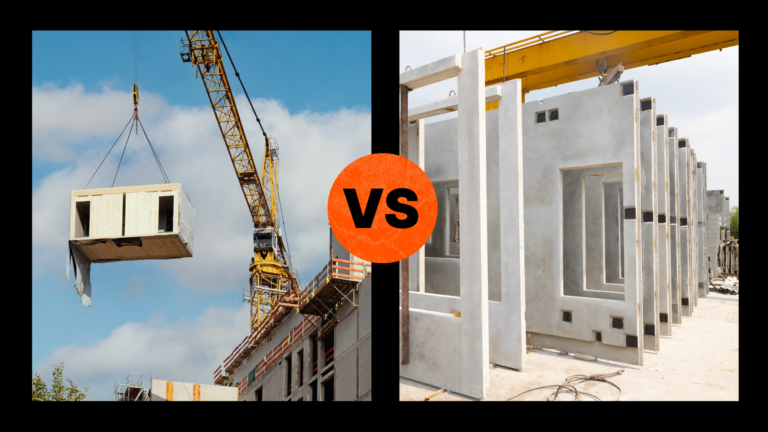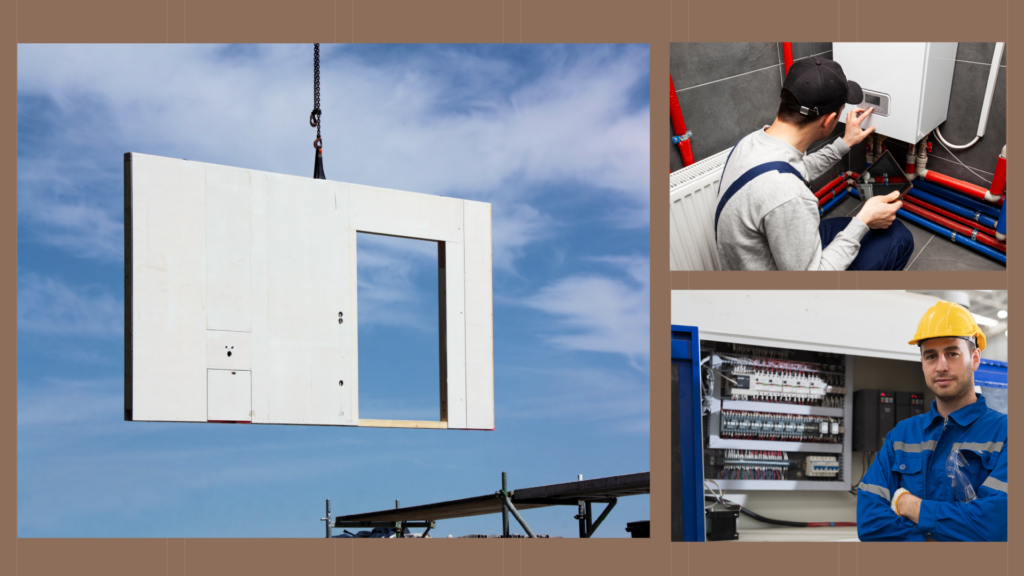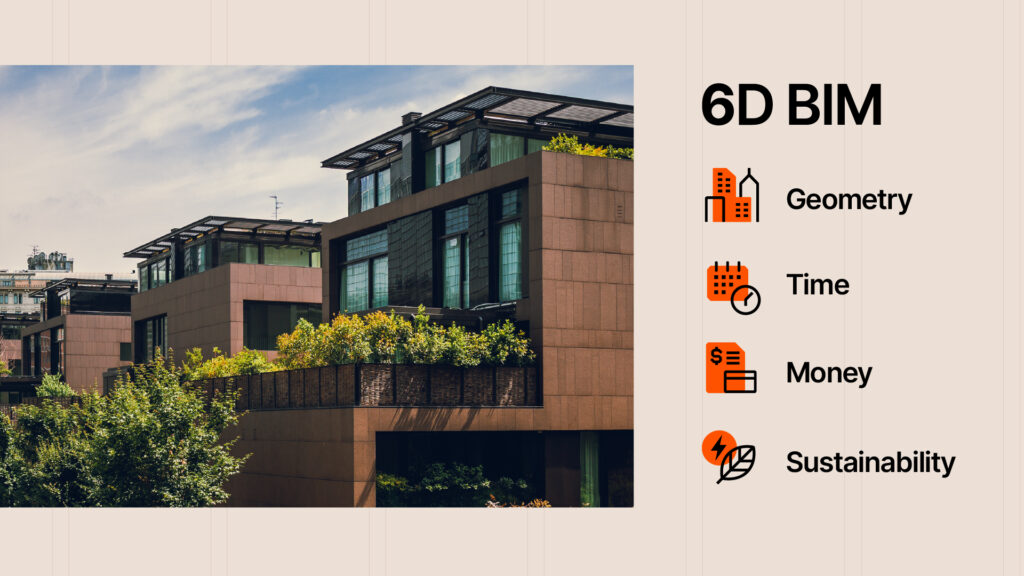— 7 min read
Off-Site Construction: Prefab vs. Modular
Last Updated Apr 10, 2025
Last Updated Apr 10, 2025

As the construction world becomes ever more competitive, deadlines get tighter and the margin for error gets slimmer, project owners around the world are always looking for an edge. Thanks to major advances, off-site building offers a solution to many common problems, such as building in harsh climates, limited on-site construction time or other issues.
But while many people still think of mobile homes when they think of off-site building, there’s a lot more to this type of construction than there was a decade or two ago. So, let’s take a closer look at prefab and modular construction, the similarities and differences — and how both offer unique construction solutions.
Table of contents
The Difference Between Prefab & Modular
Many people use the terms prefab and modular construction interchangeably, even in the construction world. However, while all modular buildings are prefabricated, not all prefabrication is modular construction.
Prefab, or prefabricated construction, refers to any kind of construction that takes place off-site, usually in a purpose-designed factory. It can refer to anything from single-building structures like site offices or prefabricated classrooms, to panels used to assemble buildings on site or buildings that are constructed in volumetric modules and then installed on-site.
Modular construction, on the other hand, refers to a method rather than a type of construction. It often describes complex buildings and structures consisting of many different purpose-built and designed modules that are manufactured off-site and then installed and connected during the on-site construction process.
For the purpose of comparison, this article refers to prefab as the off-site construction or panelization of individual building components — materials or systems — and to modular construction as volumetric modular construction, or the manufacturing and installation of finished rooms or sections.
Panelization
When discussing modular construction, the term usually means volumetric modular construction, which essentially breaks larger buildings into rooms or sections, constructs those sections off-site in a factory and then transports and installs the finished modules on-site. This could mean building the modules from scratch, or using shipping containers to construct homes, hotels or other types of buildings.
As the name suggests, panelized off-site construction involves breaking the building into different panels for walls and other building elements. These panels are then shipped to the site, installed and connected together.
Benefits & Challenges of Off-Site Construction
Prefab and modular construction have surged in popularity over the past few decades, and as the demand for this kind of construction has increased, so have the industry's capabilities.
One reason for this surge in popularity is the many benefits off-site construction offers. Project owners and contractors can realize similar benefits by adopting either prefabrication or modular construction — or incorporating both, if possible.
General Benefits of Off-site Construction
Speed
Building panels or modules in a factory is typically much faster than building them on site, particularly when you have equipment like overhead cranes and similar on hand.
Quality Control
Unlike stick–built structures, where the weather, access issues and sharing a site with other companies and trades are all common problems, off-site building gives the manufacturer total control of the process.
Access to Skilled Workers
Off-site building is often chosen for projects that need to be constructed in remote areas where access to skilled labor is limited.
Predictability
By limiting the on–site time to install a modular or prefab building, project managers have better control over schedules and can predict and mitigate potential risks
Reduced Waste
Because modular construction allows for detailed planning, there’s less human error and less waste to deal with.
So, while there is always an element of on-site construction with prefab and modular building projects, it’s usually faster and easier to plan, manage and execute most of the process.
However, prefabrication and modular construction are not equal — each has its own advantages and drawbacks.
Prefab Benefits & Challenges
Benefits:
- Offers enhanced design flexibility because panels can be built to any size or design independently of each other
- Fast and easy to manufacture
- Can pre-manufacture panels to various sizes and designs and use those ready-made options to design finished buildings
- Typically easy and cost-effective to ship to site
Challenges:
- Requires more hands-on installation and more skilled workers
- Usually takes longer to install and construct on-site, and more likely to have alignment issues
Modular Benefits & Challenges
Benefits:
- The majority of the construction is done in a climate-controlled factory, so there are no weather-related construction issues
- Can be designed, constructed, tested and modified off-site
- Modular construction companies often develop standardized designs, making construction easier and more cost-effective
- Some modular buildings can be designed to be moved from one location to another and can be reused for more than one project
Challenges:
- Volumetric modular building segments are larger, heavier, more difficult and costlier to ship to the site
- Modular buildings are more likely to have size constraints that can be a challenge for designers
- Some kinds of volumetric modular buildings — like shipping container homes or structures — have fixed and rigid dimensions, which can make the design process more difficult
Build a Strong Foundation with our Preconstruction Course
With 20+ years of experience, Ben Ashburn teaches you how to streamline planning, bidding, and procurement for better outcomes.

Applications for Prefab vs Modular Construction
While both prefab and panelized construction methods and volumetric modular construction can be used for a wide variety of applications, prefab is usually used for smaller, less complex projects, while volumetric modular construction is often used for much larger, more complex projects.
Prefabrication Applications
Because prefab construction is often faster and can be achieved with pre-manufactured panels and components, it is often used for projects with shorter timelines and smaller budgets.
These might include community infrastructure projects like schools that need additional classrooms to be constructed quickly, temporary buildings on construction sites or similar.
Modular Construction Applications
Modular construction is often used for larger projects like hospitals, hotels or luxury homes. While the on-site construction time for these projects is often remarkably low, the design, off-site construction and sometimes shipping can take considerably longer than prefab or panelized construction projects.
Modular construction is also frequently used for projects that are in remote locations, where materials and skilled labor are in short supply, or where extreme weather is a factor, such as the far north of Canada or the Amazon rainforest.
Volumetric modular structures can also be integrated with other types of construction, ranging from traditional stick building to sprung structures, depending on the project requirements.
Modular vs Prefab Construction Applications
| Project/Application | Prefabrication | Modular Construction |
|---|---|---|
| Schools and temporary accommodation | ✓ | |
| Custom homebuilding | ✓ | |
| Industrial offices, mezzanines and storage | ✓ | ✓ |
| Hotels | ✓ | |
| Hospitals | ✓ | |
| Remote construction projects | ✓ | ✓ |
| Vacation rentals | ✓ | ✓ |
Future Trends in Prefabricated and Modular Construction
One of the biggest problems the prefabricated and modular construction industry has faced until now has been stigma and preconceived ideas.
Many project owners dismissed this kind of construction as nothing more than low-quality or temporary structures. However, the truth is that off-site construction is one of the most cutting-edge sectors of the construction industry and is often the fastest to adopt new ideas, materials and methods.
Off-site construction also offers unmatched control over the construction process. This allows designers and fabricators to control quality at every stage of the process. It’s a predictable process that is easier to automate, which often makes this kind of construction faster than on-site building, where late deliveries, equipment breakdowns, managing multiple subcontractors and late material deliveries can all derail a project timeline.
Buildings can also be designed and manufactured thousands of miles away from their final location, which allows project owners to select a project team anywhere in the world and have access to state-of-the-art manufacturing facilities and skilled tradespeople no matter where their construction site happens to be.
Since prefabricated and modular construction is still very much an innovation itself, it’s not surprising that many designers and manufacturers are creating ideas and solutions in real-time to solve site-specific problems. So, whether it’s recycling and repurposing existing structures or developing eco-friendly hotels for some of the world’s most sensitive locations, there’s always something new in the world of off-site construction.
Was this article helpful?
Thank you for your submission.
0%
0%
You voted that this article was . Was this a mistake? If so, change your vote here.
Scroll less, learn more about construction.
Subscribe to The Blueprint, Procore’s construction newsletter, to get content from industry experts delivered straight to your inbox.
By clicking this button, you agree to our Privacy Notice and Terms of Service.
Categories:
Tags:
Written by
Tamara Aspeling
Tamara Aspeling is a trained construction estimator and project manager with 25 years of industry experience. She started writing professionally in 2008 and has since written extensively for the construction industry, including publications like Modular Advantage magazine. She is also a traditionally published nonfiction author and the owner of The Construction Writer Inc. Tamara studied at Western Province Technical College in South Africa and completed her national certificate in 1999. She also holds an SEO Certification from Google and a Content Marketing Certification from HubSpot.
View profileExplore more helpful resources

Modular Construction and MEP: A Collaborative Pairing
In an age of supply chain disruptions, workforce shortages, and rising material costs, off-site construction — including modular construction methods and prefabricated materials — is surfacing as a multipurpose solution....

Connected Construction: Transforming the Industry Through Integration
Construction projects are becoming increasingly complex, so companies need to innovate to accurately and profitably complete these modern structures. Connected construction — using technology and data to improve communication, processes...

The Role of BIM in Sustainable Construction
Building information modeling (BIM) is transforming the architecture, engineering, and construction (AEC) industry. With this kind of sophisticated modeling, the industry has shifted from designing in 2D to 3D. This helps...

Harnessing Energy: Advancements in Offshore Wind Farm Construction
Offshore wind farms harness the potential of oceanic wind resources, providing a reliable and eco-friendly power source. As energy demand continues to escalate worldwide, these vast installations offer construction professionals...